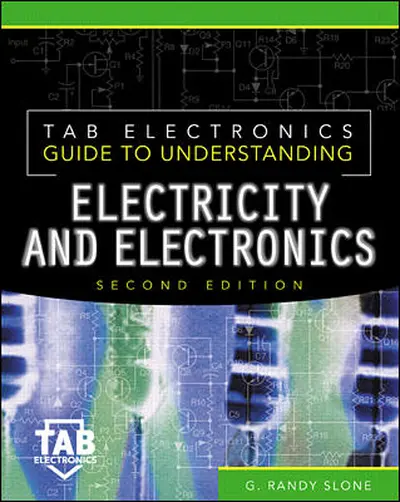My Account Details

ISBN10: 0071360573 | ISBN13: 9780071360579

Step 1 . Download Adobe Digital Editions to your PC or Mac desktop/laptop.
Step 2. Register and authorize your Adobe ID (optional). To access your eBook on multiple devices, first create an Adobe ID at account.adobe.com. Then, open Adobe Digital Editions, go to the Help menu, and select "Authorize Computer" to link your Adobe ID.
Step 3. Open Your eBook. Use Adobe Digital Editions to open the file. If the eBook doesn’t open, contact customer service for assistance.
Chapter 1: Getting Started. Chapter 2: Basic Electrical Concepts. Chapter 3: The Transformer and AC Power. Chapter 4: Rectification. Chapter 5: Capacitance. Chapter 6: Transistors. Chapter 7: Special-Purpose Diodes and Optoelectronic Devices. Chapter 8: Linear Electronic Circuits. Chapter 9: Power Control. Chapter 10: field-effect Transistors. Chapter 11: Batteries. Chapter 12: Integrated Circuits. Chapter 13: Digital Electronics. Chapter 14: Computers. Chapter 15: More about Inductors and Capacitors. Chapter 16: Radio and Television.
Chapter 3: The Transformer and AC Power. Chapter 4: Rectification. Chapter 5: Capacitance. Chapter 6: Transistors. Chapter 7: Special-Purpose Diodes and Optoelectronic Devices. Chapter 8: Linear Electronic Circuits. Chapter 9: Power Control. Chapter 10: field-effect Transistors. Chapter 11: Batteries. Chapter 12: Integrated Circuits. Chapter 13: Digital Electronics. Chapter 14: Computers. Chapter 15: More about Inductors and Capacitors. Chapter 16: Radio and Television.
Chapter 5: Capacitance. Chapter 6: Transistors. Chapter 7: Special-Purpose Diodes and Optoelectronic Devices. Chapter 8: Linear Electronic Circuits. Chapter 9: Power Control. Chapter 10: field-effect Transistors. Chapter 11: Batteries. Chapter 12: Integrated Circuits. Chapter 13: Digital Electronics. Chapter 14: Computers. Chapter 15: More about Inductors and Capacitors. Chapter 16: Radio and Television.
Chapter 7: Special-Purpose Diodes and Optoelectronic Devices. Chapter 8: Linear Electronic Circuits. Chapter 9: Power Control. Chapter 10: field-effect Transistors. Chapter 11: Batteries. Chapter 12: Integrated Circuits. Chapter 13: Digital Electronics. Chapter 14: Computers. Chapter 15: More about Inductors and Capacitors. Chapter 16: Radio and Television.
Chapter 9: Power Control. Chapter 10: field-effect Transistors. Chapter 11: Batteries. Chapter 12: Integrated Circuits. Chapter 13: Digital Electronics. Chapter 14: Computers. Chapter 15: More about Inductors and Capacitors. Chapter 16: Radio and Television.
Chapter 11: Batteries. Chapter 12: Integrated Circuits. Chapter 13: Digital Electronics. Chapter 14: Computers. Chapter 15: More about Inductors and Capacitors. Chapter 16: Radio and Television.
Chapter 13: Digital Electronics. Chapter 14: Computers. Chapter 15: More about Inductors and Capacitors. Chapter 16: Radio and Television.
Chapter 15: More about Inductors and Capacitors. Chapter 16: Radio and Television.
Need support? We're here to help - Get real-world support and resources every step of the way.